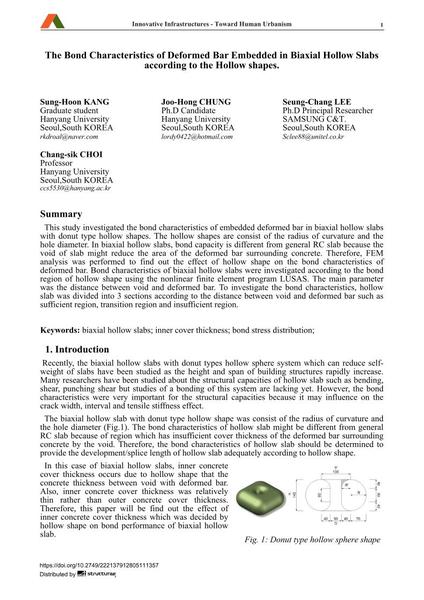The Bond Characteristics of Deformed Bar Embedded in Biaxial Hollow Slabs according to the Hollow shapes.

|
|
|||||||||||
Bibliographic Details
| Author(s): |
Sung-Hoon Kang
Joo-Hong Chung Seung-Chang Lee Chang-Sik Choi |
||||
|---|---|---|---|---|---|
| Medium: | conference paper | ||||
| Language(s): | English | ||||
| Conference: | 18th IABSE Congress: Innovative Infrastructures – Towards Human Urbanism, Seoul, Korea, 19-21 September 2012 | ||||
| Published in: | IABSE Congress Seoul 2012 | ||||
|
|||||
| Page(s): | 974-979 | ||||
| Total no. of pages: | 6 | ||||
| DOI: | 10.2749/222137912805111357 | ||||
| Abstract: |
This study investigated the bond characteristics of embedded deformed bar in biaxial hollow slabs with donut type hollow shapes. The hollow shapes are consist of the radius of curvature and the hole diameter. In biaxial hollow slabs, bond capacity is different from general RC slab because the void of slab might reduce the area of the deformed bar surrounding concrete. Therefore, FEM analysis was performed to find out the effect of hollow shape on the bond characteristics of deformed bar. Bond characteristics of biaxial hollow slabs were investigated according to the bond region of hollow shape using the nonlinear finite element program LUSAS. The main parameter was the distance between void and deformed bar. To investigate the bond characteristics, hollow slab was divided into 3 sections according to the distance between void and deformed bar such as sufficient region, transition region and insufficient region. |
||||
| Keywords: |
biaxial hollow slabs inner cover thickness bond stress distribution
|
||||
